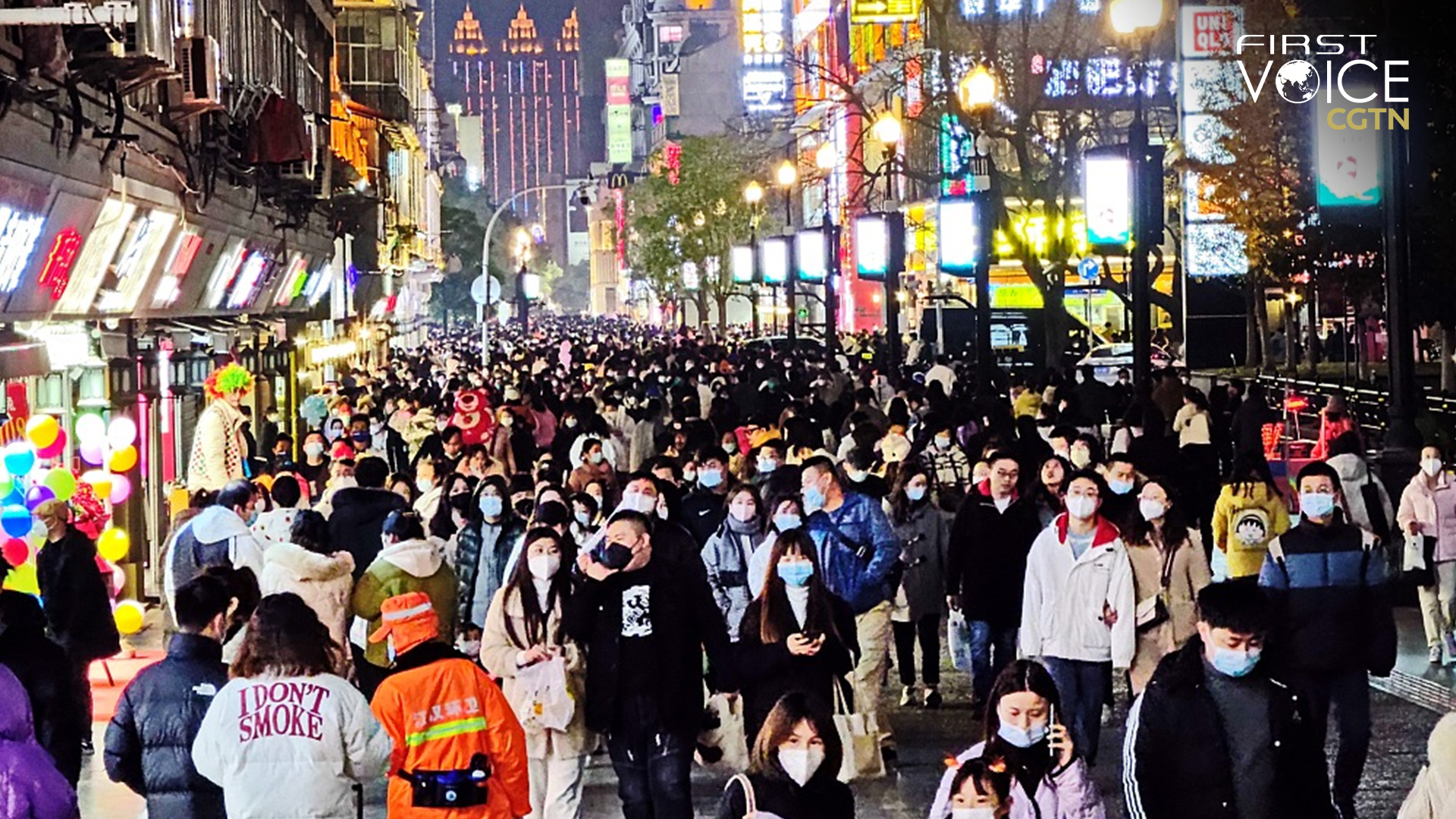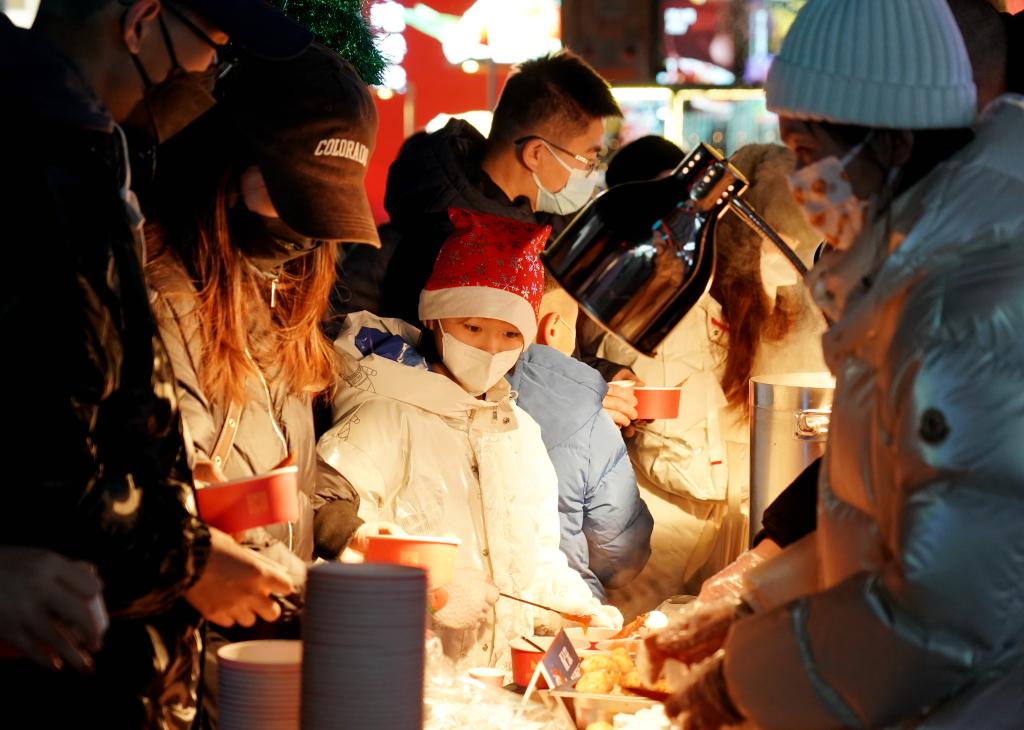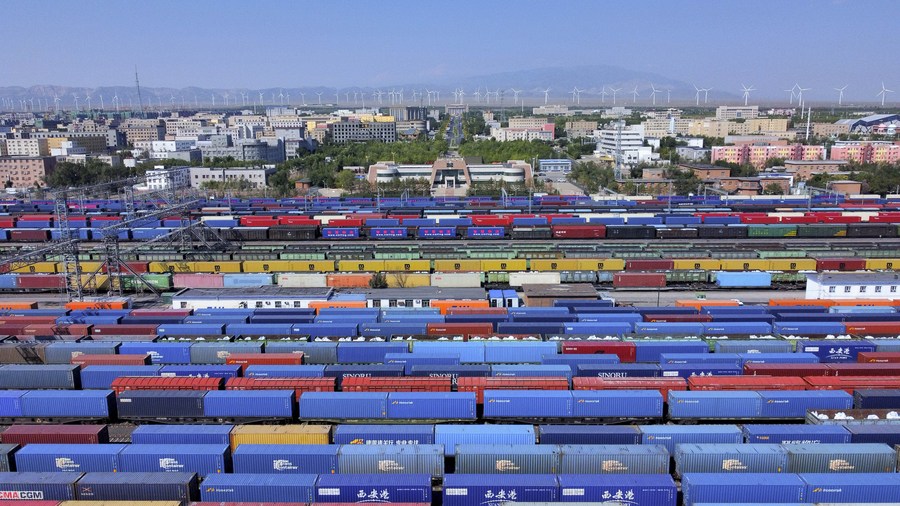
Editor's note: CGTN's First Voice provides instant commentary on breaking stories. The column clarifies emerging issues and better defines the news agenda, offering a Chinese perspective on the latest global events.
Under the prism of some Western media, whatever China has done in its battle against COVID-19 is wrong. The same Western media outlets that harshly criticized China's dynamic zero-COVID policy are now saying the "soar" in infection cases, as a result of the country's lift of curbs in their words, is hurting the economy.
Bloomberg, for instance, is hyping that China's economy outlook is "grim for the new year" and its aggregate index of indicators show a contraction in activity in December from an already weak pace in November.
True, China may face some challenges in its retail sales and consumer spending in the early days when the country downgraded its level of COVID-19 management. But there is no need to make a fuss over it. The lifting of COVID-19 related restrictions doesn't mean an immediate rebound in economic growth. An increase of infection cases that could happen in any country – not just China – means that it takes time for people to get before they can go back to shops and restaurants.
Latest figures have already shown the revival of China's consumption market. Since the shift in COVID-19 policy, the attendance at some movie theaters in Beijing has returned to 75 percent of the regular level and popular diners have posted more than 80 percent of customer traffic, China's Xinhua News Agency reported.

People select food at a business center in Beijing, capital of China, Dec. 25, 2022. /Xinhua
People select food at a business center in Beijing, capital of China, Dec. 25, 2022. /Xinhua
The optimization of COVID-19 response means Chinese residents will be more willing to travel and spend. Consumption will become a major driving force for economic growth, chief economist with China Securities Huang Wentao said in a recent interview with Xinhua. Wu Chaoming, chief economist with Chasing International Economic Institute, believes that the per capita consumption expenditure of Chinese residents would increase from 8 percent to 12 percent in the new year.
Many foreign firms are also upbeat about China's economic outlook. "Although it (China's downgrade of COVID-19 management) might bring some challenges in the short term, we believe we will see a meaningful recovery in the long run," said Kenichi Tanaka, president of Fujifilm (China) Investment Co., Ltd, as Xinhua reported.
But in some Western media's coverage, everything concerning China is turned upside down. In their eye, the shift in COVID-19 management could lead to a "grim" economic outlook, but in the meantime, the country's dynamic zero-COVID policy meant a failed economy.
Has the previous dynamic zero-COVID policy resulted in poor economic performances? Admittedly, the arduous anti-virus battle over the past three years has caused some disruptions. But the Chinese economy has managed to consolidate its resilience. It has not only guaranteed people's basic livelihood, but also outstripped the majority of countries in trade volume and production.

China-Europe freight trains at the Alataw Pass, northwest China's Xinjiang Uygur Autonomous Region, on Sept. 10, 2022. /Xinhua
China-Europe freight trains at the Alataw Pass, northwest China's Xinjiang Uygur Autonomous Region, on Sept. 10, 2022. /Xinhua
Against the backdrop of the global virus-induced economic trough, China's gross domestic product (GDP) grew at an average annual rate of 4.6 percent from the third quarter of 2019 to the third quarter of 2022, according to the Organization for Economic Cooperation and Development. This is well above the world average. The figure of the United States – the world's largest economy – stood at 1.6 percent during the same period. Major developed countries including Germany, France, Britain, and Japan saw their GDP expanding at below 0.5 percent.
In addition, compared with the U.S. that saw its inflation rate surging to a four-decade high, China has kept this figure at a relatively low level. According to the Moody's Analytics 2022 data, soaring inflation caused ordinary American families to fork out $445 more per month compared to a year ago. While the skyrocketing costs of food, energy, and shelter put extra pressure on millions of American households already struggling with their family budget, China is seeing a decline in food prices – a 0.8 percent drop month-on-month in November, data from the National Bureau of Statistics showed.
China's dynamic zero-COVID policy in the past three years can never be equated to a close-door policy. According to the General Administration of Customs, China's foreign trade of goods expanded 8.6 percent year-on-year to 38.34 trillion yuan (5.78 trillion U.S. dollars) in the first 11 months of 2022.
Fact speaks louder than words. Amidst the changing situation, China's COVID-19 policy is under constant adjustments. Chinese people, rather than those Western media outlets, have the ultimate say on the effects of their country's policy.
(If you want to contribute and have specific expertise, please contact us at opinions@cgtn.com. Follow @thouse_opinions on Twitter to discover the latest commentaries in the CGTN Opinion Section.)